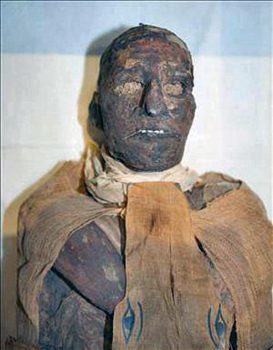Mummification, practiced by the ancient Egyptians, was used to preserve the body for the purpose of keeping the soul, or “ka”, intact for the journey through the Afterlife. Because of the obvious religious implications behind mummification, the process was a long one performed by a team of embalmers and priests who completed specific steps, along with prayers and rituals that would have guaranteed that the deceased would have enjoyed life beyond Earth. Along with the spirituality that surrounded mummification, there was a real science involved, one that was perfected by the Ancient Egyptians over the course of 2,000 years. The Egyptians took advantage of their geography, a dry and arid climate that was perfect for decelerating the decay of a dead body, and used natural resources to preserve the remains of pharaohs, nobleman, and even sacred animals. Egyptologists and researchers excavate and examine mummies today that are over 3,000 years old, some preserved well enough to determine specific information about the individual, including genetic lineage, diseases suffered, even diet.
The actual process of mummification evolved over time, along with advancements in Egyptian technology and medicine. Mummification began in earnest during the Old Kingdom (around 2600 B.C.), and the best preserved mummies are found to have been made between 1500 and 1075 B.C., during the New Kingdom.
Preparing a mummy took seventy days. The process involved embalming, removing internal organs, treating the body with chemicals, and wrapping the body. This was performed by special priests that worked to embalm and preserve the body, and perform the correct rituals that would insure the body would remain intact in the afterlife.
To begin the mummification process, all internal organs were removed from the body. The internal organs decompose quickly after death, so removing them would have been most prudent in the preservation process. The brain (thought to have no real purpose to the Egyptians), for example, was removed through the nose, using a long needle-like instrument. The remaining organs were removed through an incision in the stomach and chest. The only organ to remain in the body was the heart, thought to be the center of thought and emotion.
Once the organs were removed, they were embalmed and placed in special clay containers known as canopic jars. Each jar held a special purpose and significance, and would have been buried with the mummy. In later mummies, the mummified organs were replaced inside the body. Canopic jars would still be buried with the mummies, though.



Once the organs were removed and taken care of, all moisture needed to be removed from the body. This was accomplished by covering the body with a type of salt called natron. Embalmers would also place packs of natron inside the body cavity. It took forty to fifty days for the body to dry out completely, and all that was left was skin, hair, and bones. At this point, the embalmers removed the packs of natron, and washed all natron off the body. Embalmers would then fill in any sunken body areas with linen or sawdust to make the body seem more “alive”.
The final step in the mummification process was to wrap the body. This required hundreds of yards of linen, which were meticulously wrapped by priests around the entire body, often individual fingers and toes. Warm resin coated the linen every few layers in order to promote preservation, followed by more layers. Among layers were placed several charms and amulets, including a scarab beetle over the heart. These were meant to protect the mummy from harm in his journey into the Afterlife.
After wrapping was completed, the mummy was finished. A mask was placed on the face of the mummy, and it was placed in a sarcophagus. It was then time for the funeral and burial, which was often in an elaborate pyramid or tomb. The tomb would have contained furniture, food, riches, and prayers that would keep the deceased busy and happy in the Afterlife.
The process of mummification was a science perfected over time by the Egyptians. Owing much to their arid climate and abundance of resources like salt, the Egyptians were able to preserve the deceased, and prepare the dead for their next journey, into the Afterlife.
